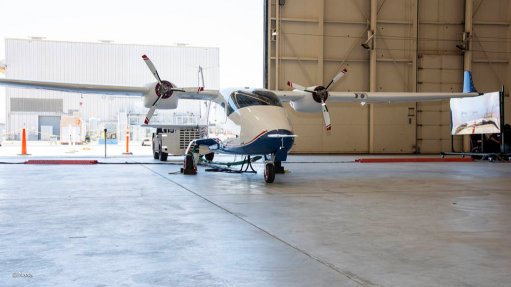
The X-57 in its initial configuration; later, it will get a new wing
Photo by: Nasa
The US National Aeronautics and Space Administration (Nasa) reported on Friday that a key stage had been successfully achieved in the pre-flight testing of its X-57 Maxwell experimental aircraft. This was the successful thermal testing of the cruise motor controllers for the aircraft’s all-electric propulsion system.
The X-57 is intended to demonstrate efficient and practical all-electric flight technologies, starting with the electric propulsion system on conventional wings but later combining electric power with a totally new wing design. (The X-57 has not been built from scratch but was a modified Italian Tecnam P2006T light twin piston engine aircraft.)
“The cruise motor controllers convert energy stored in the aircraft’s lithium-ion batteries to power the aircraft’s motors, which drive the propellors,” explained Nasa. “The controllers use silicon carbide transistors to deliver 98% efficiency during high-power take-off and cruise, meaning they do not generate excessive heat and can be cooled off by the air flowing through the motor.”
But while they may not themselves generate excessive heat, in flight the controllers would be exposed to extreme external temperature conditions. They were complex systems and some of their components were temperature-sensitive.
Consequently, the controllers which would be fitted to the X-57 recently underwent closely-monitored thermal testing inside a test chamber at Nasa’s Glenn Research Centre, in Cleveland, in the US state of Ohio. In the chamber, they were subjected to a wider temperature range than that which they would encounter in flight, to ensure a safety margin. Nasa gave the test temperature range in terms of degrees Fahrenheit (°F), still used in the US; it was -11 °F to +147 °F. This equivalated to -28.89 °C to +63.89 °C.
“Now that ground tests have validated the controllers under the most extreme temperature conditions expected in flight, the X-57 team is one step closer to integrating all of [the] Maxwell’s systems and ensuring that they can work together – one of the biggest challenges for an aircraft, especially a one-of-a-kind X-plane,” stated Nasa. The next important step in the X-57 programme was a Flight Readiness Review, an essential prerequisite for the authorisation of the aircraft’s first flight.